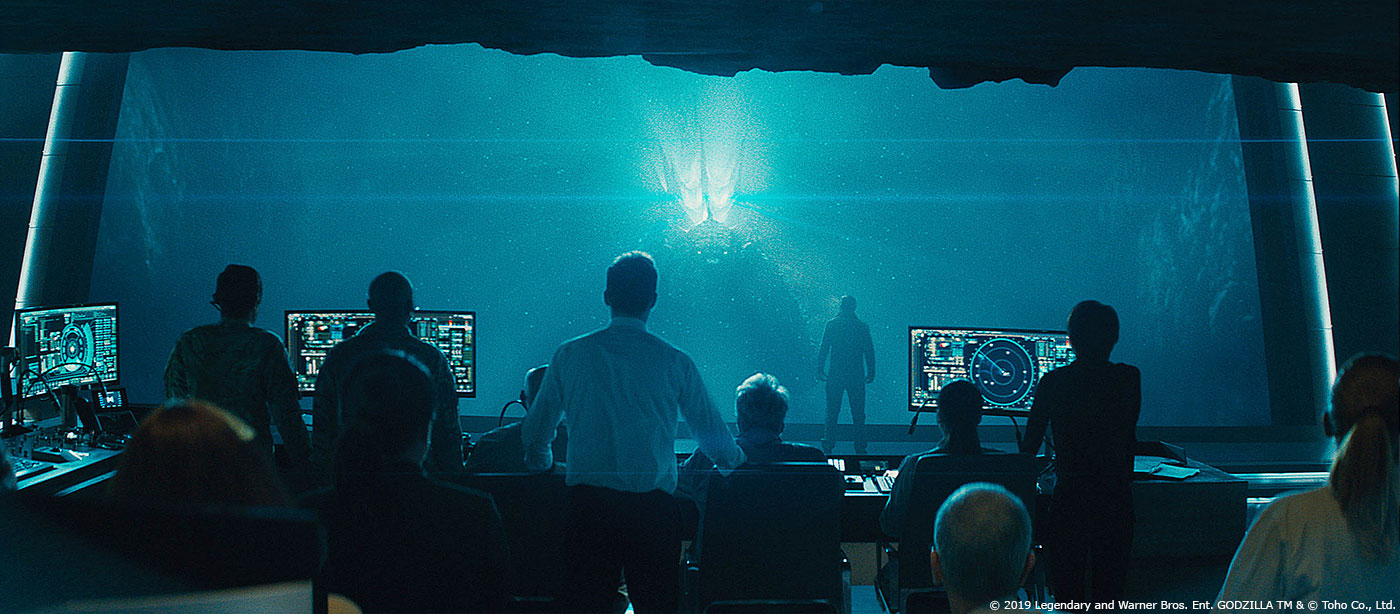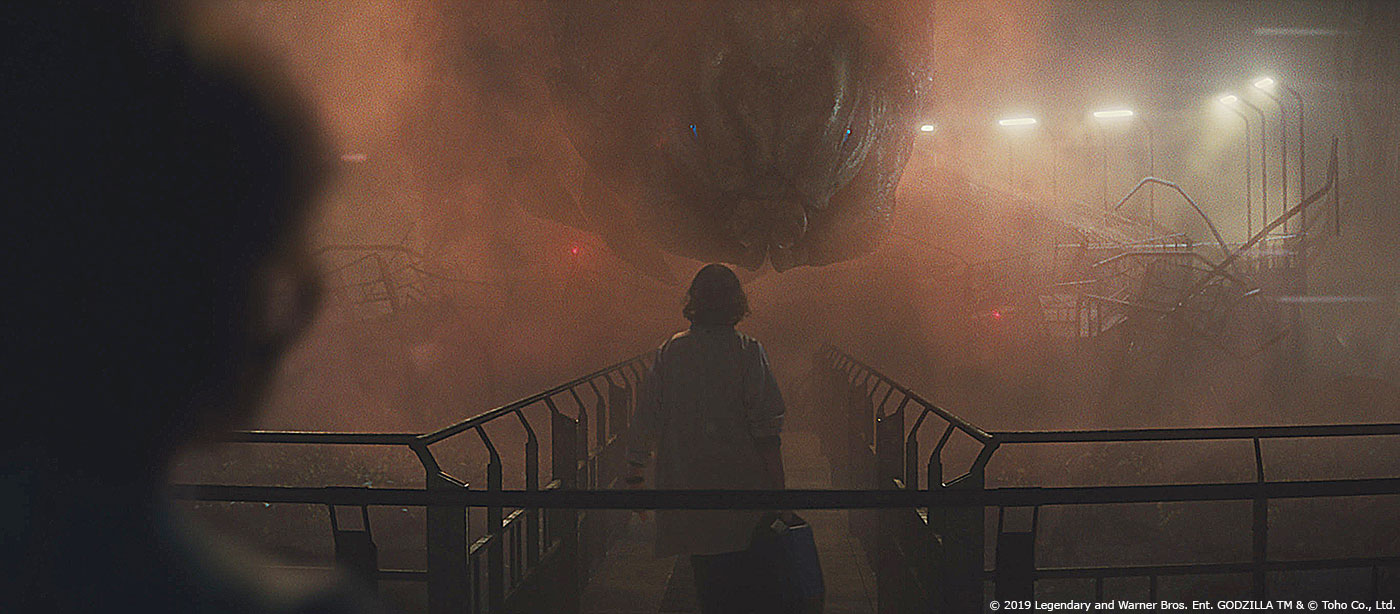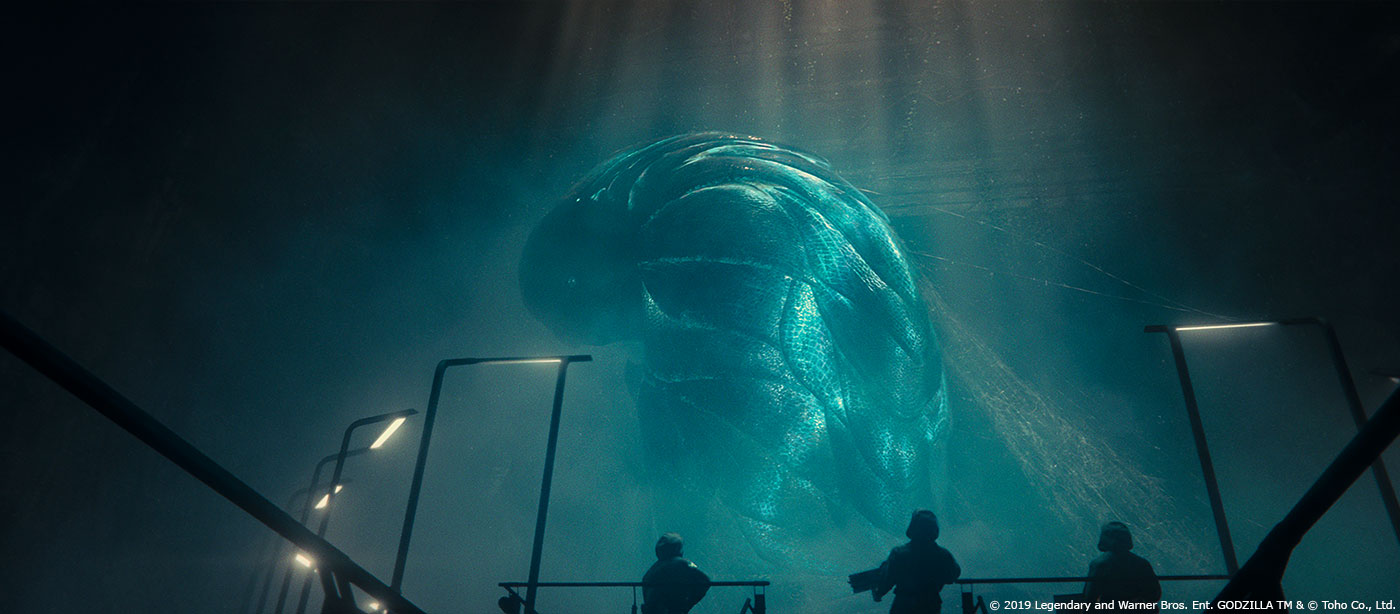Daryl Sawchuk started his career in visual effects in 2006 at MPC and works on many films like 10,000 BC, SUCKER PUNCH, MAN OF STEEL and GODZILLA. In 2016, he joined Method Studios and worked on DOCTOR STRANGE, JUSTICE LEAGUE and BLACK PANTHER.
What is your background?
I went to school for Fine Art at the University of Toronto and Sheridan College. After doing some on air broadcast graphics work, I went back for a post graduate program to learn computer animation and Alias Wavefront/Maya. I did commercial and TV series work in Toronto, then a couple of animated feature films as an animator before moving to London to start work in VFX with MPC. I spent ten years at MPC between the studio’s London and Vancouver offices before moving back down to LA to work at Method Studios. After working as an Animation Supervisor/Director on a number of films, I transitioned over to VFX supervision for GODZILLA: KING OF THE MONSTERS!
How did you get involved on this show?
Guillaume Rocheron and I go way back. We worked on a film in London together then moved to Vancouver at the same time to help setup MPC’s offices, and collaborated on a half dozen films, including SUCKER PUNCH, MAN OF STEEL, and LIFE OF PI. We even shared an office for a few years. I was the Head of Animation when Guillaume did the 2014 GODZILLA, and when I heard he was doing the sequel, I reached out and said I’d really love to be a part of this one.
What was your feeling to be part of the Godzilla universe?
For someone with an animation background, it’s always fun to work on large creatures breaking things, not to mention a beloved classic character like Godzilla. I also knew that the complexity of work that was going to be required would be a huge challenge but very rewarding.
How was the collaboration with director Michael Dougherty and VFX Supervisor Guillaume Rocheron?
We spent a few months at the beginning of production designing the creature and look of the environments and continued fine-tuning those designs throughout the shoot. We met with Michael early on and did a couple of interactive design sessions. These sessions were very productive and allowed us to hear first-hand what he wanted from our sequences, especially in regard to the design and execution of Mothra. Guillaume is an extremely collaborative supervisor and continually motivated us to deliver a very high quality artistic final image.
What was their expectations and approach about the visual effects?
The expectations were to create photorealistic effects at a large scale. On set, production filmed with as much real atmospherics and interactive light on the actors as possible, using the cadence and rhythm of the practical lights patterns to indicate the mood of the creature and intensify the scene.
How did you organize the work with your VFX Producer?
VFX Producer Steve Won and I earmarked a series of key shots early on that would allow us to establish the looks for various sequences in the movie, including major environment builds. We also identified key looks within the Mothra sequence to define the appearance of the ancient temple, the egg, Mothra and the various color changes that take place within the scene.
What are the sequences made by Method Studios?
Method handled six sequences in total, with three of those being major sequences that happen right at the beginning of the movie: where Mothra first emerges out of her egg; the sequence in which Mark is picked up in the Osprey and flown over the ocean to the oil rig that opens up into the Monarch company’s secret laboratory; and the sequence when Godzilla first displays his bioluminescence and approaches the team inside the underwater base.
Can you explain in detail about the design and creation of Mothra?
We had initial concepts from Legacy Effects for Mothra and used that as a base, refining all the details in her design. Guillaume kept mentioning the elegance that Michael wanted out of her. Even though she was a larva, she needed to be beautiful and feminine. We looked at a lot of reference from nature as well as modern car design to determine her the silhouette and how to make the interlocking shell along her back flow together. We looked at various insect, crustacean and tardigrade references for arm and foot design, and studied macro photography of plants and other foliage for subtle patterning detail that we incorporated into the textural detail and color patterning of the shell, including the ‘cosmic egg’ pattern along the spine, which is the primary source her bioluminescence light. Another big part of Mothra’s design exploration was for the webs that she is encased in when she emerges from the egg. The DFX Supervisor, Earl Paraszczynec, spent a bunch of time developing the look of the webs, based off of an initial round of concept artwork. He developed a Houdini-based procedural system to allow us to define points of contact on her body and the floor below her, and draw a series of dendrites and cross curves to simulate the look of a silk web. We created a series of 16 panels that drape around her body and were simulated based on Mothra’s performance. Then artists were able to go back into Houdini to add tertiary detail before rendering the main lines and interior details in V-Ray.
Can you tell us more about her rigging and animation?
We took some liberties with the internal anatomy of the larva and rigged up a central skeleton and a pseudo rib cage. We thought about how the creature would locomote, even though she really ended up thrashing around in a series of coiled, sinuous type movements, primarily in one location. What proved very tricky was figuring out how the series of interlocking plates along her back should articulate, either by sliding apart or on top of each other, to allow the animators to get to the poses that ultimately looked the best. The team built a connective membrane similar to a pill bug to keep the plates together as they spread apart, and we did muscle and fat simulation on the underside of the creature to help give it weight and scale. Animation Supervisor Ben Anderson was tasked with the very difficult job of making Mothra move in an elegant, subtle way. Michael is a big fan of the stop motion performances of classic horror films, so we had to operate with a touch of restraint, and avoid big swooping, CG movements, instead aiming for more detailed, staccato, and imperfect adjustments to her body and face. The mandibles, teeth and plates around her head were the primary areas animated to indicate her mood, but we did allow for subtle eye, brow and cheek animation for shots when we were very close to her face.
How did you create the various shaders and textures?
Mothra was broken down into 176 UDIMs for texturing and ended up with 27 textures sets (diffuse, spec… etc) totaling nearly 3,200 textures overall in 4K resolution. We used Mari and Substance to hand paint and procedurally produce the textures for Mothra based on the extensive research we did during the concept phase. We painted a lot of displacement detail in Zbrush as well.
Mothra has an internal lighting. Can you elaborate about this aspect?
Bioluminescence on Mothra’s body was achieved by adding spheres to the internal structure in modeling first. These spheres were then passed to lookdev to convert them to sphere lights that we could use as light sources to affect a refractive subsurface shader from inside, giving it the sub dermal glowing effect. When the look and placement of the spheres were approved, they were passed to rigging to attach them to the internal skeleton of Mothra. The internal structure effect was achieved by adding a modeled skeleton, attaching it to the rig and letting it interact with the internal sphere lights. Mothra’s main shader is a V-Ray layered shader that uses a mix of refractive subsurface shaders to achieve the needed complexity. Bioluminescent color and intensity were controlled by nodes in the shader that are exposed on the main shader attributes, giving lighting an easy way to dial in color or change intensity. The general rule of thumb was that 20 percent of the lighting in the scene came on the belly side of the creature, 80 percent came off of her shell, and specifically the ‘cosmic egg’ pattern on her back that allowed bioluminescent light from the creature to spill out into the scene. Pulses of light on set were matched to the timing of pulse on the creature and the environment.
Can you tell us more about her eyes work?
Originally, we were going to take a much simpler approach to her eyes, the textures and shading specifically, until a couple of new profile shots were added to the sequence that were extreme closeups. Those shots required us to switch gears and model a physically accurate eye with corneal bulge that allowed us to refract light properly, then we repainted the textures to achieve the final look.
How did you create the vast temple environment?
Encased in overgrown roots and foliage, the entire space is heavily inspired by the ruined temples of Angkor Wat. We spent a long time modeling ornate, weathering details to the interior space, with the work overseen our Modeling Lead, Robert Smith, and one of our CG Supervisors, Trevor Adams. Artists used photo reference to model in the series of overgrown roots and trees that spread along the floor and branch up, climbing the destroyed walls. We textured the room procedurally and used a series of layered shaders to achieve the various levels of stone, moss and wetness details using tri-planar projections rendered in V-Ray. Our FX team led by Emmanuele Berti created a dynamic system of hanging vines and ground floor foliage that would give us both subtle generic movement and dynamic interaction every time Mothra moved through the scene. A big part of the environment and look of the sequence is the atmospheric fog/haze that is omnipresent inside the temple. On set we had quite a huge amount of practical smoke, which was valuable reference for how heavily hazed the director was intending the scene to play out. There was also a series of LED panels that would change color in various patterns, allowing us to see how the creature’s bioluminescence affected the lighting on the actors and the environment. We built out a series of FX volume passes to mimic the various areas of fog and atmosphere: low lying ground, background generic, and hero creature atmosphere. The key to achieving interesting volumes is to create a detailed source that has different frequencies of noise. We also had a pass of fluid volumes that we called hero vortices, a very localized VDB. Our FX Lead, Terry Marriot, generated a wake and large-scale force that Mothra was displacing in the scene. In the back of the room, we see two statues that face the egg. Fans of Godzilla mythology would recognize them as an homage to the “Mothra Twins” seen in previous iterations of the franchise, hinting at what life form could in fact be inside the giant egg that lies within the circular metal gantry. The egg pattern was referenced from a combination of the initial color and marking patterns from the classic 1961 film, as well as a bunch of macro photography reference of various plant life, small bugs/beetles, and other types of leathery surfaces.
Can you explain in detail about the creation of the Monarch underwater base?
The underwater base sequence was a series of shots where our hero character is flown out in the middle of the Atlantic Ocean to a seemingly normal oil rig that opens up to reveal the inner workings of a high-tech laboratory and base of operations for the Monarch Corporation. The asset was textured procedurally and rendered via tri-planar projections in V-Ray by one of our Lead Lighting Artists, Colin Ebbeson. We augmented small details, surface imperfections, breakup and added additional gak in DMP, with DMP Leads Alejandro Hernandez and Igor Startisin basing much of the work on photo reference. The scene descends down the oil rig shaft that opens into a large interior space, the base of the operation. We see the huge carcass of one of the Mutos from the first film being studied by a team of scientists. The interior environment was a combination of modeled geo, procedural textures, DMP weathering, details and signage, along with IES volume lights rendered by the FX team in Houdini; the large crowds of digital double scientists, workers and soldiers, were completed in Golaem by Crowd TD Tim Riley. The design of the space was based off the practical set, which was heavily inspired by the Brutalist architectural movement. Large raw geometric concrete slabs defined the shapes and forms of the buildings. We treated the concrete a bit more polished to help give it more of a high-tech feel and lit everything a little cooler. We did some initial concepts of the space once we had a 3D rough layout of the major structures to help define the look of the space and the mood the scene was meant to play out within. The DMP team hand painted a lot of small details, such as signage and various other gak, to help give the room the appropriate scale based off of research of large factory interiors.
How did you create Godzilla?
The asset was shared with us from MPC. We converted it to our pipeline and ingested the materials to work with our shaders and software. We did some facial modeling and rigging to give the creature the ability to emote and match some of the reference that was seen elsewhere in the film. We then spent time in lighting and lookdev to match the look of the fins lighting up and pulsing with bioluminescence and we used that to light the DMP mountain range, and particulate closest to her.
Can you tell us more about his swimming animation?
The team found reference of large amphibian creatures, alligators and Komodo dragons, and did an initial swim cycle based on that. The artists realized very quickly that the distance the tail traveled side to side was breaking the sound barrier, so we had to scale the motion down to a more believable real-world scale! For the scene when Godzilla comes to a slight standstill and drifts in position, we really focused on dialing in the pose of the arms and legs to achieve an aesthetically pleasing silhouette.
Can you explain in detail about the beautiful underwater lighting work?
Our Lighting Lead, Hitesh Solanki, did an initial pass of beauty lighting to match an early concept that we had established. He was able to dial in the falloff of the light quite effectively to simulate an underwater look. We had some exterior lights of the base that, when rendered with some IES volumes from FX, gave some outward facing illumination, but at the distance to the base Godzilla was positioned, we needed to cheat some top light into the scene, playing him closer to the surface. We did a lot of work with both FX and Nuke particles to get the layers of underwater silt and particulate into the scene. The main challenges our Comp Supervisor, Tom Mchattie, had with the underwater look was getting the depth hazing cues along Godzilla’s length correct to accurately show the sense of scale and distance from camera. Godzilla’s fins light up and pulse with bioluminescence and we used that to light the DMP mountain range, and particulate closest to her, and semi silhouette the creature.
Which sequence or shot was the most challenging?
All of the work was complex, but the Mothra sequence definitely tested us on every level and in every department. It wasn’t just a big creature animation/FX heavy scene, it had very intricate lighting and compositing challenges that needed to be very art directable.
Is there something specific that gives you some really short nights?
Trying to render all the passes required for the show! Early render forecasts had us finishing the show in 2020, before the team took steps to optimize scene geometry and render passes!
What is your favorite shot or sequence?
Probably the Mothra sequence. The initial shot of Madison entering the temple as the camera pushes past her revealing the egg as it starts to move around and illuminate the scene, and the series of shots where Mothra spits webs at the containment soldiers, then thrashes and destroys the metal gantry as she scoops up the soldier, rears back and throws him against webs on the wall. Also, the shot where we see her pull back in pain, affected by Emma’s attempts to dial in the Osprey, interacting with the atmosphere around her and backlit by the daylight coming through hole in the temple roof, before she rushes back down to camera. I think the shot of the Osprey helicopter circling and then descending onto/through the oil rig looked great as well!
What is your best memory on this show?
Seeing a very large group of talented people, working very hard, collaborating and pulling off some amazing work!
How long have you worked on this show?
About 14 months.
What’s the VFX shots count?
129 very difficult shots.
What was the size of your team?
125-150 artists.
What is your next project?
Production VFX Supervisor for a Disney film called FLORA AND ULYSSES.
What are the four movies that gave you the passion for cinema?
E.T., BLADE RUNNER, JURASSIC PARK, and TOY STORY.
A big thanks for your time.
WANT TO KNOW MORE?
Method Studios: Dedicated page about GODZILLA: KING OF THE MONSTERS on Method Studios website.
© Vincent Frei – The Art of VFX – 2019









